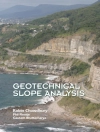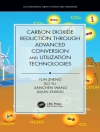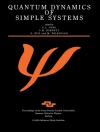A practical guide to the basic physics that radiation protection professionals need
A much-needed working resource for health physicists and other radiation protection professionals, this volume presents clear, thorough, up-to-date explanations of the basic physics necessary to address real-world problems in radiation protection. Designed for readers with limited as well as basic science backgrounds, Physics for Radiation Protection emphasizes applied concepts and carefully illustrates all topics through examples as well as practice problems.
Physics for Radiation Protection draws substantially on current resource data available for health physics use, providing decay schemes and emission energies for approximately 100 of the most common radionuclides encountered by practitioners. Excerpts of the Chart of the Nuclides, activation cross sections, fission yields, fission-product chains, photon attenuation coefficients, and nuclear masses are also provided. Coverage includes:
- The atom as an energy system
- An overview of the major discoveries in radiation physics
- Extensive discussion of radioactivity, including sources and materials
- Nuclear interactions and processes of radiation dose
- Calculational methods for radiation exposure, dose, and shielding
- Nuclear fission and production of activation and fission products
- Specialty topics ranging from nuclear criticality and applied statistics to X rays
- Extensive and current resource data cross-referenced to standard compendiums
- Extensive appendices and more than 400 figures
Jadual kandungan
Preface xvii
1 Structure of Atoms 1
1.1 Atom Constituents 2
1.2 Structure, Identity, and Stability of Atoms 5
1.3 Chart of the Nuclides 6
1.4 Nuclear Models 8
Problems – Chapter 1 9
2 Atoms and Energy 11
2.1 Atom Measures 12
2.2 Energy Concepts for Atoms 14
2.2.1 Mass-energy 15
2.2.2 Binding Energy of Nuclei 16
2.3 Summary 18
Other Suggested Sources 18
Problems – Chapter 2 19
3 Radioactive Transformation 21
3.1 Processes of Radioactive Transformation 21
3.1.1 Transformation of Neutron-rich Radioactive Nuclei 23
3.1.2 Double Beta (ββ) Transformation 27
3.1.3 Transformation of Proton-rich Nuclei 27
3.1.4 Positron Emission 29
3.1.5 Average Energy of Negatron and Positron Emitters 32
3.1.6 Electron Capture (EC) 33
3.1.7 Radioactive Transformation of Heavy Nuclei by Alpha Particle Emission 35
3.1.8 Theory of Alpha Particle Transformation 38
3.1.9 Transuranic (TRU) Radionuclides 40
3.1.10 Gamma Emission 41
3.1.11 Internal Transition (Metastable or Isomeric States) 42
3.1.12 Internal Conversion 43
3.1.13 Multiple Modes of Radioactive Transformation 49
3.1.14 Transformation by Delayed Neutron Emission 51
3.1.15 Transformation by Spontaneous Fission 51
3.1.16 Proton Emission 53
3.2 Decay Schemes 54
3.3 Rate of Radioactive Transformation 57
3.3.1 Activity 58
3.3.2 Units of Radioactive Transformation 58
3.3.3 Mathematics of Radioactive Transformation 60
3.3.4 Half-Life 62
3.3.5 Mean Life 63
3.3.6 Effective Half-life 64
3.4 Radioactivity Calculations 65
3.4.1 Half-life Determination 68
3.5 Activity–mass Relationships 70
3.5.1 Specific Activity 70
3.6 Radioactive Series Transformation 73
3.6.1 Series Decay Calculations 73
3.6.2 Recursive Kinetics: the Bateman Equations 76
3.7 Radioactive Equilibrium 77
3.7.1 Secular Equilibrium 78
3.7.2 Transient Equilibrium 80
3.7.3 Radionuclide Generators 81
3.8 Total Number of Transformations (Uses of t and λEff) 84
3.9 Discovery of the Neutrino 86
Acknowledgments 87
Other Suggested Sources 87
Problems – Chapter 3 88
4 Interactions 91
4.1 Production of X-rays 91
4.2 Characteristic X-rays 93
4.2.1 X-rays and Atomic Structure 95
4.2.2 Auger Electrons 96
4.3 Nuclear Interactions 98
4.3.1 Cross-Section 100
4.3.2 Q-values for Nuclear Reactions 102
4.4 Alpha Particle Interactions 104
4.4.1 Alpha–Neutron Reactions 105
4.5 Transmutation by Protons and Deuterons 106
4.5.1 Proton–Alpha Particle (p, α) Reactions 108
4.5.2 Proton–Neutron (p, n) Reactions 109
4.5.3 Proton–Gamma (p, γ) Reactions 110
4.5.4 Proton–Deuteron Reactions 110
4.5.5 Deuteron–Alpha (d, α) Reactions 111
4.5.6 Deuteron–Proton (d, p) and Deuteron–Neutron (d, n) Reactions 111
4.6 Neutron Interactions 114
4.6.1 Radiative Capture (n, γ) Reactions 114
4.6.2 Charged Particle Emission (CPE) 115
4.6.3 Neutron–Proton (n, p) Reactions 116
4.6.4 Neutron–Neutron (n, 2n) Reactions 116
4.7 Activation Product Calculations 117
4.7.1 Neutron Activation Product Calculations 119
4.7.2 Charged Particles Calculations 124
4.8 Medical Isotope Reactions 126
4.9 Transuranium Elements 128
4.10 Photon Interactions 130
4.10.1 Activation by Photons 130
4.11 Fission and Fusion Reactions 133
4.11.1 Fission 133
4.11.2 Fusion 134
4.12 Summary 138
Other Suggested Sources 139
Problems – Chapter 4 139
5 Nuclear Fission and its Products 143
5.1 Fission Energy 145
5.2 Physics of Sustained Nuclear Fission 147
5.3 Neutron Economy and Reactivity 152
5.4 Nuclear Power Reactors 154
5.4.1 Reactor Design: Basic Systems 155
5.5 Light Water Reactors (LWRs) 157
5.5.1 Pressurized Water Reactor (PWR) 157
5.5.2 Boiling Water Reactor (BWR) 159
5.5.3 Inherent Safety Features of LWRs 161
5.5.4 Decay Heat in Power Reactors 163
5.5.5 Uranium Enrichment 164
5.6 Heavy Water Reactors (HWRs) 165
5.6.1 HWR Safety Systems 168
5.7 Breeder Reactors 169
5.7.1 Liquid Metal Fast Breeder Reactor (LMFBR) 171
5.8 Gas-cooled Reactors 174
5.8.1 High-temperature Gas Reactor (HTGR) 175
5.9 Reactor Radioactivity 176
5.9.1 Fuel Cladding 177
5.9.2 Radioactive Products of Fission 178
5.9.3 Production of Individual Fission Products 182
5.9.4 Fission Products in Spent Fuel 184
5.9.5 Fission Product Poisons 185
5.10 Radioactivity in Reactors 188
5.10.1 Activation Products in Nuclear Reactors 188
5.10.2 Tritium Production in Reactors 191
5.10.3 Low-level Radioactive Waste 192
5.11 Summary 193
Acknowledgments 194
Other Suggested Sources 195
Problems – Chapter 5 195
6 Naturally Occurring Radiation and Radioactivity 197
6.1 Discovery and Interpretation 197
6.2 Background Radiation 199
6.3 Cosmic Radiation 200
6.4 Cosmogenic Radionuclides 203
6.5 Naturally Radioacitve Series 207
6.5.1 Neptunium Series Radionuclides 214
6.6 Singly Occurring Primordial Radionuclides 214
6.7 Radioactive Ores and Byproducts 216
6.7.1 Resource Recovery 218
6.7.2 Uranium Ores 218
6.7.3 Water Treatment Sludge 219
6.7.4 Phosphate Industry Wastes 219
6.7.5 Elemental Phosphorus 220
6.7.6 Manhattan Project Wastes 221
6.7.7 Thorium Ores 223
6.8 Radioactivity Dating 224
6.8.1 Carbon Dating 224
6.8.2 Dating by Primordial Radionuclides 225
6.8.3 Potassium–Argon Dating 226
6.8.4 Ionium (230Th) Method 227
6.8.5 Lead-210 Dating 227
6.9 Radon and its Progeny 228
6.9.1 Radon Subseries 229
6.9.2 Working Level for Radon Progeny 232
6.9.3 Measurement of Radon 236
6.10 Summary 240
Acknowledgements 241
Other Suggested Sources 241
Problems – Chapter 6 242
7 Interactions of Radiation with Matter 245
7.1 Radiation Dose and Units 245
7.1.1 Radiation Absorbed Dose 246
7.1.2 Radiation Dose Equivalent 246
7.1.3 Radiation Exposure 247
7.2 Radiation Dose Calculations 249
7.2.1 Inverse Square Law 249
7.3 Interaction Processes 250
7.4 Interactions of Alpha Particles and Heavy Nuclei 252
7.4.1 Recoil Nuclei and Fission Fragments 254
7.4.2 Range of Alpha Particles 254
7.5 Beta Particle Interactions and Dose 257
7.5.1 Energy Loss by Ionization 258
7.5.2 Energy Losses by Bremsstrahlung 258
7.5.3 Cerenkov Radiation 259
7.5.4 Attenuation of Beta Particles 261
7.5.5 Range Versus Energy of Beta Particles 262
7.5.6 Radiation Dose from Beta Particles 264
7.5.7 Beta Dose from Contaminated Surfaces 267
7.5.8 Beta Contamination on Skin or Clothing 268
7.5.9 Beta Dose from Hot Particles 269
7.6 Photon Interactions 270
7.6.1 Photoelectric Interactions 271
7.6.2 Compton Interactions 272
7.6.3 Pair Production 274
7.6.4 Photodisintegration 276
7.7 Photon Attenuation and Absorption 277
7.7.1 Attenuation (μ) and Energy Absorption (μEn) Coefficients 280
7.7.2 Effect of E and Z on Photon Attenuation/Absorption 284
7.7.3 Absorption Edges 286
Checkpoints 288
7.8 Energy Transfer and Absorption by Photons 288
7.8.1 Electronic Equilibrium 293
7.8.2 Bragg–Gray Theory 295
7.9 Exposure/Dose Calculations 296
7.9.1 Point Sources 297
7.9.2 Gamma Ray Constant, Γ 298
7.9.3 Exposure and Absorbed Dose 300
7.9.4 Exposure, Kerma, and Absorbed Dose 301
7.10 Summary 303
Acknowledgments 303
Other Suggested Sources 304
Problems – Chapter 7 304
8 Radiation Shielding 307
8.1 Shielding of Alpha-Emitting Sources 307
8.2 Shielding of Beta-Emitting Sources 308
8.2.1 Attenuation of Beta Particles 308
8.2.2 Bremsstrahlung Effects for Beta Shielding 311
8.3 Shielding of Photon Sources 314
8.3.1 Shielding of Good Geometry Photon Sources 315
8.3.2 Half-Value and Tenth-Value Layers 322
8.3.3 Shielding of Poor Geometry Photon Sources 324
8.3.4 Use of Buildup Factors 330
8.3.5 Effect of Buildup on Shield Thickness 331
8.3.6 Mathematical Formulations of the Buildup Factor 333
8.4 Gamma Flux for Distributed Sources 338
8.4.1 Line Sources 339
8.4.2 Ring Sources 341
8.4.3 Disc and Planar Sources 342
8.4.4 Shield Designs for Area Sources 343
8.4.5 Gamma Exposure from Thick Slabs 350
8.4.6 Volume Sources 355
8.4.7 Buildup Factors for Layered Absorbers 356
8.5 Shielding of Protons and Light Ions 357
8.6 Summary 360
Acknowledgments 360
Other Suggested Sources 361
Problems – Chapter 8 361
9 Internal Radiation Dose 365
9.1 Absorbed Dose in Tissue 365
9.2 Accumulated Dose 366
9.2.1 Internal Dose: Medical Uses 369
Checkpoints 369
9.3 Factors In The Internal Dose Equation 370
9.3.1 The Dose Reciprocity Theorem 377
9.3.2 Deposition and Clearance Data 378
9.3.3 Multicompartment Retention 378
9.4 Radiation Dose from Radionuclide Intakes 383
9.4.1 Risk-Based Radiation Standards 384
9.4.2 Committed Effective Dose Equivalent (CEDE) 385
9.4.3 Biokinetic Models: Risk-Based Internal Dosimetry 386
9.4.4 Radiation Doses Due to Inhaled Radionuclides 388
9.4.5 Radiation Doses Due to Ingested Radionuclides 398
9.5 Operational Determinations of Internal Dose 405
9.5.1 Submersion Dose 406
Checkpoints 406
9.6 Tritium: a Special Case 408
9.6.1 Bioassay of Tritium: a Special Case 410
9.7 Summary 411
Other Suggested Sources 412
Problems – Chapter 9 412
10 Environmental Dispersion 415
10.1 Atmospheric Dispersion 417
10.1.1 Atmospheric Stability Effects on Dispersion 420
10.1.2 Atmospheric Stability Classes 422
10.1.3 Calculational Procedure: Uniform Stability Conditions 424
10.1.4 Distance xmax of Maximum Concentration (Xmax) 426
10.1.5 Stack Effects 427
Checkpoints 429
10.2 Nonuniform turbulence: Fumigation, Building Effects 429
10.2.1 Fumigation 429
10.2.2 Dispersion for an Elevated Receptor 431
10.2.3 Building Wake Effects: Mechanical Turbulence 432
10.2.4 Concentrations of Effluents in Building Wakes 433
10.2.5 Ground-level Area Sources 435
10.2.6 Effect of Mechanical Turbulence on Far-field Diffusion 436
10.3 Puff Releases 438
10.4 Sector-Averaged X/Q Values 439
10.5 Deposition/Depletion: Guassian Plumes 443
10.5.1 Dry Deposition 443
10.5.2 Air Concentration Due to Resuspension 447
10.5.3 Wet Deposition 449
10.6 Summary 452
Other Suggested Sources 452
Problems – Chapter 10 453
11 Nuclear Criticality 455
11.1 Nuclear Reactors and Criticality 456
11.1.1 Three Mile Island Accident 456
11.1.2 Chernobyl Accident 458
11.1.3 NRX Reactor: Chalk River, Ontario, December 1952 461
11.1.4 SL-1 Accident 461
11.1.5 K-reactor, Savannah River Site, 1988 462
11.1.6 Fukushima-Daichi Plant—Japan, March 11, 2011 463
11.2 Nuclear Explosions 464
11.2.1 Fission Weapons 464
11.2.2 Fusion Weapons 465
11.2.3 Products of Nuclear Explosions 466
11.2.4 Fission Product Activity and Exposure 467
Checkpoints 469
11.3 Criticality Accidents 470
11.3.1 Y-12 Plant, Oak Ridge National Laboratory, TN: June 16, 1958 470
11.3.2 Los Alamos Scientific Laboratory, NM: December 30, 1958 471
11.3.3 Idaho Chemical Processing Plant: October 16, 1959, January 25, 1961, and October 17, 1978 472
11.3.4 Hanford Recuplex Plant: April 7, 1962 473
11.3.5 Wood River Junction RI: July 24, 1964 473
11.3.6 UKAEA Windscale Works, UK: August 24, 1970 474
11.3.7 Bare and Reflected Metal Assemblies 474
11.4 Radiation Exposures in Criticality Events 475
11.5 Criticality Safety 476
11.5.1 Criticality Safety Parameters 478
11.6 Fission Product Release in Criticality Events 482
11.6.1 Fast Fission in Criticality Events 483
11.7 Summary 485
Acknowledgments 486
Other Suggested Sources 486
Problems – Chapter 11 486
12 Radiation Detection and Measurement 489
12.1 Gas-Filled Detectors 489
12.2 Crystalline Detectors/Spectrometers 493
12.3 Semiconducting Detectors 494
12.4 Gamma Spectroscopy 495
12.4.1 Gamma-Ray Spectra: hv ≤ 1.022 Me V 495
12.4.2 Gamma-Ray Spectra: hv ≥ 1.022 Me V 500
12.4.3 Escape Peaks and Sum Peaks 502
12.4.4 Gamma Spectroscopy of Positron Emitters 503
12.5 Portable Field Instruments 504
12.5.1 Geiger Counters 504
12.5.2 Ion Chambers 505
12.5.3 Microrem Meters 506
12.5.4 Alpha Radiation Monitoring 506
12.5.5 Beta Radiation Surveys 507
12.5.6 Removable Radioactive Surface Contamination 508
12.5.7 Instrument Calibration 509
12.6 Personnel Dosimeters 509
12.6.1 Film Badges 509
12.6.2 Thermoluminescence Dosimeters (TLDs) 510
12.6.3 Pocket Dosimeters 511
12.7 Laboratory Instruments 511
12.7.1 Liquid Scintillation Analysis 511
12.7.2 Proportional Counters 515
12.7.3 End-window GM Counters 517
12.7.4 Surface Barrier Detectors 518
12.7.5 Range Versus Energy of Beta Particles 519
Other Suggested Sources 520
Problems – Chapter 12 521
13 Statistics in Radiation Physics 523
13.1 Nature of Counting Distributions 523
13.1.1 Binomial Distribution 525
13.1.2 Poisson Distribution 525
13.1.3 Normal Distribution 527
13.1.4 Mean and Standard Deviation of a Set of Measurements 530
13.1.5 Uncertainty in the Activity of a Radioactive Source 531
13.1.6 Uncertainty in a Single Measurement 533
Checkpoints 533
13.2 Propagation of Error 534
13.2.1 Statistical Subtraction of a Background Count or Count Rate 535
13.2.2 Error Propagation of Several Uncertain Parameters 537
13.3 Comparison of Data Sets 538
13.3.1 Are Two Measurements Different? 538
13.4 Statistics for the Counting Laboratory 541
13.4.1 Uncertainty of a Radioactivity Measurement 541
13.4.2 Determining a Count Time 542
13.4.3 Efficient Distribution of Counting Time 544
13.4.4 Detection and Uncertainty for Gamma Spectroscopy 545
13.4.5 Testing the Distribution of a Series of Counts (the Chi-square Statistic) 547
13.4.6 Weighted Sample Mean 548
13.4.7 Rejection of Data 549
13.5 Levels of Detection 551
13.5.1 Critical Level 552
13.5.2 Detection Limit (Ld) or Lower Level of Detection (LLD) 554
13.6 Minimum Detectable Concentration or Contamination 558
13.6.1 Minimum Detectable Concentration (MDConc.) 558
13.6.2 Minimum Detectable Contamination (MDCont.) 560
13.6.3 Less-than Level (Lt) 561
13.6.4 Interpretations and Restrictions 561
13.7 Log Normal Data Distributions 562
13.7.1 Particle Size Analysis 565
Acknowledgment 569
Other Suggested Sources 569
Chapter 13 – Problems 569
14 Neutrons 571
14.1 Neutron Sources 571
14.2 Neutron Parameters 573
14.3 Neutron Interactions 575
14.3.1 Neutron Attenuation and Absorption 576
14.4 Neutron Dosimetry 578
14.4.1 Dosimetry for Fast Neutrons 581
14.4.2 Dose from Thermal Neutrons 583
14.4.3 Monte Carlo Calculations of Neutron Dose 585
14.4.4 Kerma for Neutrons 588
14.4.5 Dose Equivalent Versus Neutron Flux 588
14.4.6 Boron Neutron Capture Therapy (BNCT) 591
14.5 Neutron Shielding 591
14.5.1 Neutron Shielding Materials 591
14.5.2 Neutron Shielding Calculations 593
14.5.3 Neutron Removal Coefficients 594
14.5.4 Neutron Attenuation in Concrete 597
14.6 Neutron Detection 598
14.6.1 Measurement of Thermal Neutrons 599
14.6.2 Measurement of Intermediate and Fast Neutrons 600
14.6.3 Neutron Foils 602
14.6.4 Albedo Dosimeters 604
14.6.5 Flux Depression of Neutrons 604
14.7 Summary 605
Acknowledgment 605
Other Suggested Sources 605
Problems – Chapter 14 606
Answers to Selected Problems 607
Appendix A 613
Appendix B 615
Appendix C 625
Appendix D 629
Index 657
Mengenai Pengarang
JAMES E. MARTIN, Ph D, CHP, is Associate Professor (Emeritus) at the University of Michigan where he has done research and teaching on environmental and public health aspects of radiation with an emphasis on radiation physics since 1982. He also served 25 years (1957-81) with the U.S. Public Health Service and Environmental Protection Agency, doing environmental assessments of radioactive materials including protection standards. His doctorate is in Radiological Health. Professor Martin is certified in Health Physics by the American Board of Health Physics and has published over 40 peer-reviewed papers and numerous articles and reports. Advisory Committee memberships include two National Academy of Science committees, the Science Advisory Board of the Environmental Protection Agency, and the U.S. Department of Energy.












